In the early part of the last century, private social clubs could be found in almost every town along the Burlington train line. And, Western Springs was no exception.
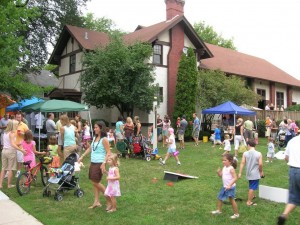
The Village Club – circa 2012
In 1910, local residents had few of today’s entertainment opportunities … no radios, no television, no movie theaters, and very few telephones or gramophones, the predecessor of the phonograph. As a result, the average evening was usually spent at home reading books, visiting neighbors, playing cards, or sitting with the family on one of the large front porches that were common at that time.
In view of this, it’s hardly surprising that, in that same year, a young man named “Hib” Cattell wrote to other Western Springs residents suggesting that they organize a social club, which was becoming very popular during that era. The response was swift: nearly 100 residents subscribed to $100 each. While that may not sound like much today, $100 in 1910 would be the equivalent of $2,340 today! These initial member subscriptions were sufficient to finance the purchase of a 100’ lot at the corner of Lawn and Chestnut. And, by the following year, the Village Club House had been built.
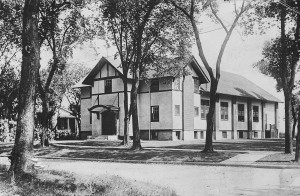
The Village Club – Circa 1913
According to an early Club bulletin, the organization contained “… no lines of creed or politics”. Its only goal was to “… provide wholesome recreation” and thereby foster fellowship. The building initially served much like a private men’s club where one could enjoy a cigar or beverage after work. However, it also had a two-lane bowling alley in the basement. This was later expanded to four lanes in 1945 and equipped with automatic pin spotters in 1959. The club also featured a stage and auditorium which, for a period of time, was home to the Theater of Western Springs.
While the club often hosted dances, bridge tournaments, and gatherings where women were always welcome, membership rules gradually evolved to where females were allowed full membership privileges. And, there were numerous activities from which all members could choose.

Ping Pong Champions – 1935
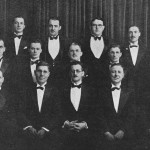
Village Club Male Chorus – circa 1935
As time went by, the club also offered more family events, themed dances, ping pong tournaments, a men’s chorus, and golf outings, even opening its doors for rental groups. The Club also produced its own “Minstrel Shows” in the 1920s, which featured a large cast of amateur performers and singers.
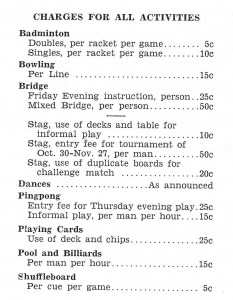
Village Club Activity Fees – 1935
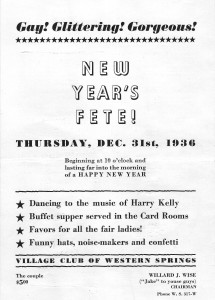
New Years at the Village Club – 1936
During the Great Depression of the 1930s and World War II that followed, most similar clubs vanished due to declining membership and financial shortfalls. But, the Village Club was very aggressive in scheduling events during these challenging times, thereby retaining members. That’s a real tribute to the volunteer board members of that era.
Today, the Village Club still occupies its original English Tudor design building, just west of the Thomas Ford Library. Membership remains strong and ranges from young families to senior citizens. The club welcomes members and their guests to a wide array of parties: New Year’s Eve, St. Pat’s, Halloween, ladies’ and men’s nights, pig roasts, Breakfast with Santa, TGIFs, and children’s parties. For more information on this historic treasure, visit the Village Club’s website, www.thevillageclub.com.
